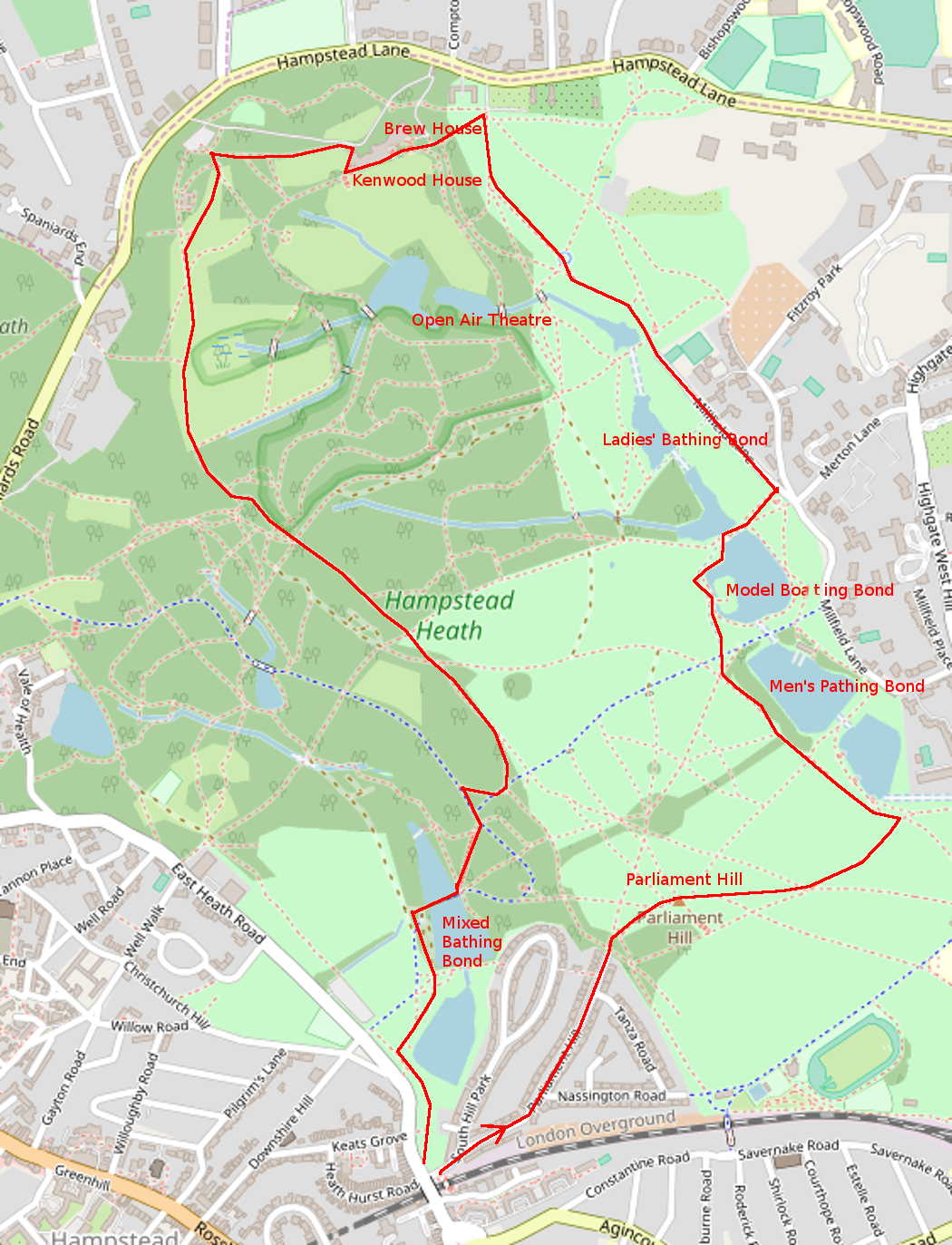

Hampstead Heath is a woodland park of over 300 hectares approximately 6 km north of central London. The park has been known since the Middle Ages. During Queen Victoria's time, many were tempted to build the area full of houses, but with the Queen's intervention, it remained a park.
When you exit the train station, turn right where the street goes noticeably uphill. Right next to the station building is the tiny World Peace Garden (Interesting Places, No. 89), which is cared for by volunteers. Of course, you can leave more detailed exploration for the way back, because there are comfortable benches where you can rest your feet. Let's move on. The road makes a slight bend to the left and then forks. We choose the right branch. This street is called Parliament Hill, from this we don't turn anywhere and push straight up the hill. On two sides are typical English houses of reddish stone. Where the houses and the street end, you can see a park ahead. But it would still be worth stopping. Look to the left. George Orwell lived in this last house on the street.
Anyway, right in front of us is Parliament Hill, we climb there. The hill is named after an old battle in the civil war, where supporters and opponents of the parliament fought. Another popular name is Kite Hill. This is because the townspeople love to fly kites there when the weather is nice. The hill is also a favourite place for "pyromaniacs". People love to organize fireworks there. For example, every year on November 5. This is the day in 1605 when Guy Fawkes and his cronies planned to blow up the Houses of Parliament (along with the king who was supposed to be speaking there). According to the laws then and now, Guy was a criminal (and he received the punishment of a criminal), but somehow he has become something of a romantic hero. It should also be noted that it was on this hill that Karl Marx used to have a picnic with his family. The hill has a great view of central London. Sometimes you can come to this hill to watch the sunrise or sunset. I haven't been there myself at the time, but it must have been gorgeous.
If you look to the North-east, you will see a church tower there. This church is in a place called Highgate. A little to the right is the cemetery with Marx's grave. Highgate got its name from the fact that there was a customs gate on the hill. It collected customs duties on goods that peasants took to London markets for sale.
We now go down the hill in an approximately east direction. Rows of large ponds can be seen in the distance. Before the ponds we turn left and between the ponds we head onto the Millfield Lane road. Along this we go to a place called Kenwood House.
Next to the road is Kenwood Ladies' Bathing Bond, opened in 1925. There is a sign on the road leading to it: "Women only". Hollywood star Katharine Hepburn is also rumored to have gone swimming there by candlelight at night.
Kenwood House is a stately 18th century house that houses a valuable art collection from renowned artists such as Rembrandt and Vermeer.
On the way, you can stop at Brew House, which has a great coffee shop. Are you peckish?
On the way back, you can see slightly wooded areas, but sometimes you also come across large open spaces. I tried to show the recommended route on the attached map, but it's okay if you stray a little off the road. The park is full of very well-trodden roads and trails and there is no danger of getting lost once and for all. Because there are residential areas or motorways in all directions, you can still get out somewhere.